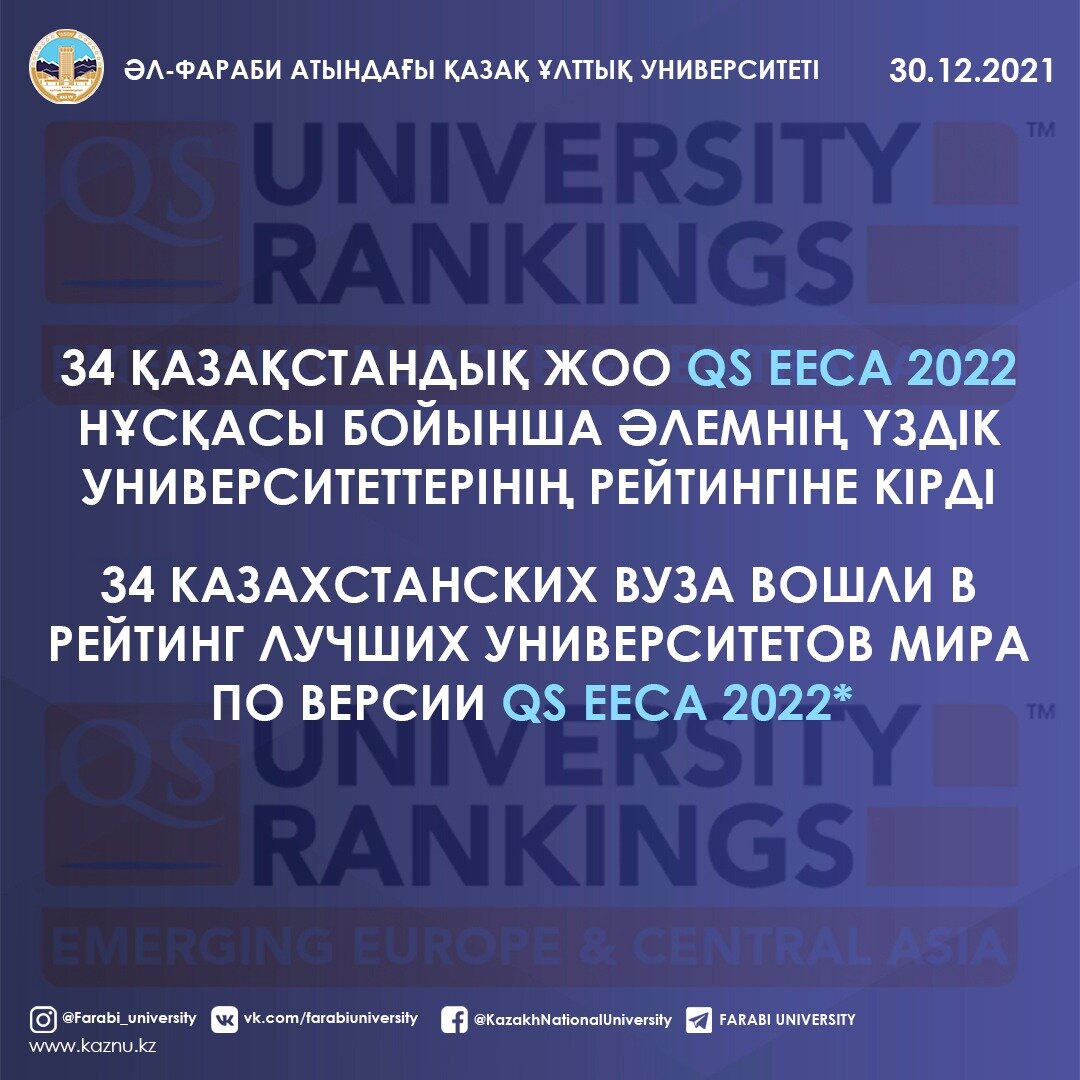34 KAZAKHSTAN UNIVERSITIES INCLUDED IN THE RATING OF THE BEST UNIVERSITIES IN THE WORLD BY QS EECA 2022
Views: 4272

34 universities of Kazakhstan were included in the list of the best universities according to the British agency QS EECA 2022. The rating contains information about the top universities in Europe and Central Asia. The TOP-100 includes 7 domestic universities. Al-Farabi Kazakh National University became the leader. Compared to last year, the university has moved up 3 positions and took 16th place, beating such foreign universities as Istanbul Technical University (Turkey), Vilnius University (Lithuania) and others.
Following KazNU in the ranking, the LN Gumilyov Eurasian National University took the leading position.
It is on the 42nd line of the international rating. Satbayev University ranks third among Kazakhstani universities. Among the regional universities, the M.Auezov South Kazakhstan University entered the top 100.
“The number of Kazakhstani universities included in the QS Emerging Europe and Central Asia University Rankings is increasing every year. This speaks of the recognition of higher education on the world stage. If last year the rating included 27 Kazakhstani universities, this year there are already 34. Domestic universities compete with leading universities in Russia, Czech Republic, Poland, Estonia, Lithuania, Turkey, Georgia, Azerbaijan and other countries. This shows that our universities have done a lot to improve the quality of education. Also, an increase in the number of Kazakhstani universities in the world ranking indicates that our universities provide knowledge that meets the requirements of the time and world standards, ”said Adlet Toybaev, Director of the Department of Higher and Postgraduate Education of the Ministry of Education and Science of the Republic of Kazakhstan.
Note that ten main indicators are taken into account when compiling the QS EECA rating. Among them are the academic reputation of the university, reputation among employers, the ratio of the number of teachers and students, the number of publications per teacher and employee, the number of citations of publications by university scientists, the proportion of foreign students, teachers and staff, and others.








